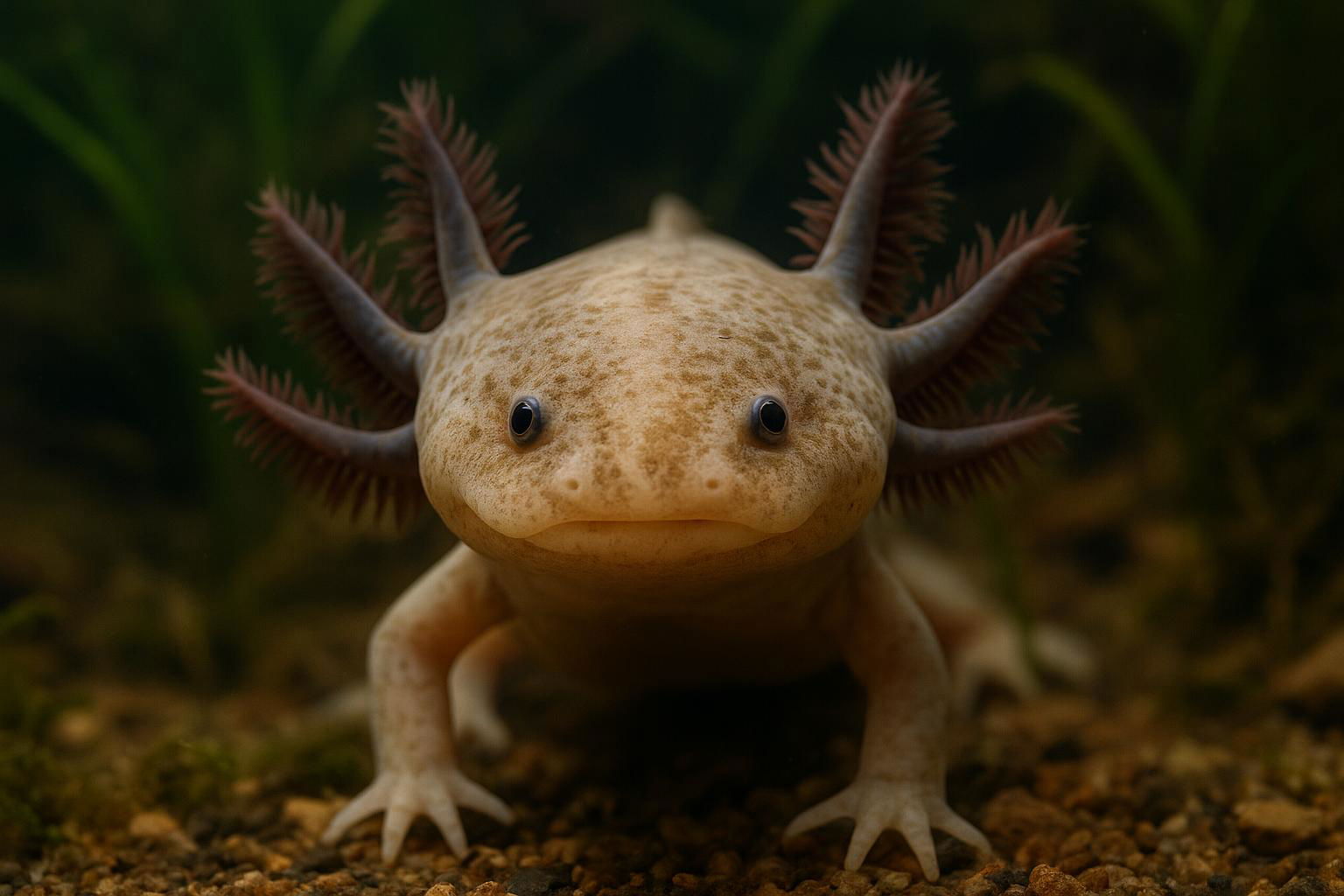
Axolotl
Ambystoma mexicanum
The Axolotl (Ambystoma mexicanum) is a distinctive and fascinating amphibian renowned for its unique ability to retain larval features throughout its entire life, a phenomenon known as neoteny. Native to the high-altitude lakes of the Valley of Mexico, particularly Lake Xochimilco, this species is critically endangered in the wild due to habitat loss, pollution, and the introduction of invasive species. Characterized by their feathery external gills, which protrude from the sides of their heads, axolotls are highly adaptable and can regenerate lost body parts, making them a popular subject for scientific research. They typically exhibit a wide range of colors, including shades of white, pink, brown, and black, with leucistic (pale with dark eyes) and albino variants commonly found in captivity. Growing up to 30 centimeters (about 12 inches) in length, axolotls are carnivorous, feeding on worms, insects, and small fish. Despite their precarious status in their natural habitat, axolotls thrive in aquariums around the world, captivating enthusiasts with their perpetual youthful appearance and endearing smiles.
Colors: Wild Type, Albino, Golden, White, Lavender, Copper, GFP (Green Fluorescent), Black, Piebald, Silver, Enigma, Firefly, Galaxy, Silver Dalmatian, Golden Dalmatian, Lavender Dalmatian, Copper Dalmatian, Chimera
 All Species & Breeds
All Species & Breeds
 Highland Cattle
Highland Cattle
 Miniature Donkeys
Miniature Donkeys
 All Species Directory
All Species Directory
 Highland Cattle in Virginia
Highland Cattle in Virginia
 Miniature Donkeys in Texas
Miniature Donkeys in Texas












